Clever terracing tricks turned this steep sloped garden into the perfect retreat – take the tour
Made from natural stone, the terraces include a waterfall, vine terrace, and meadow, begging you to explore this sloped garden
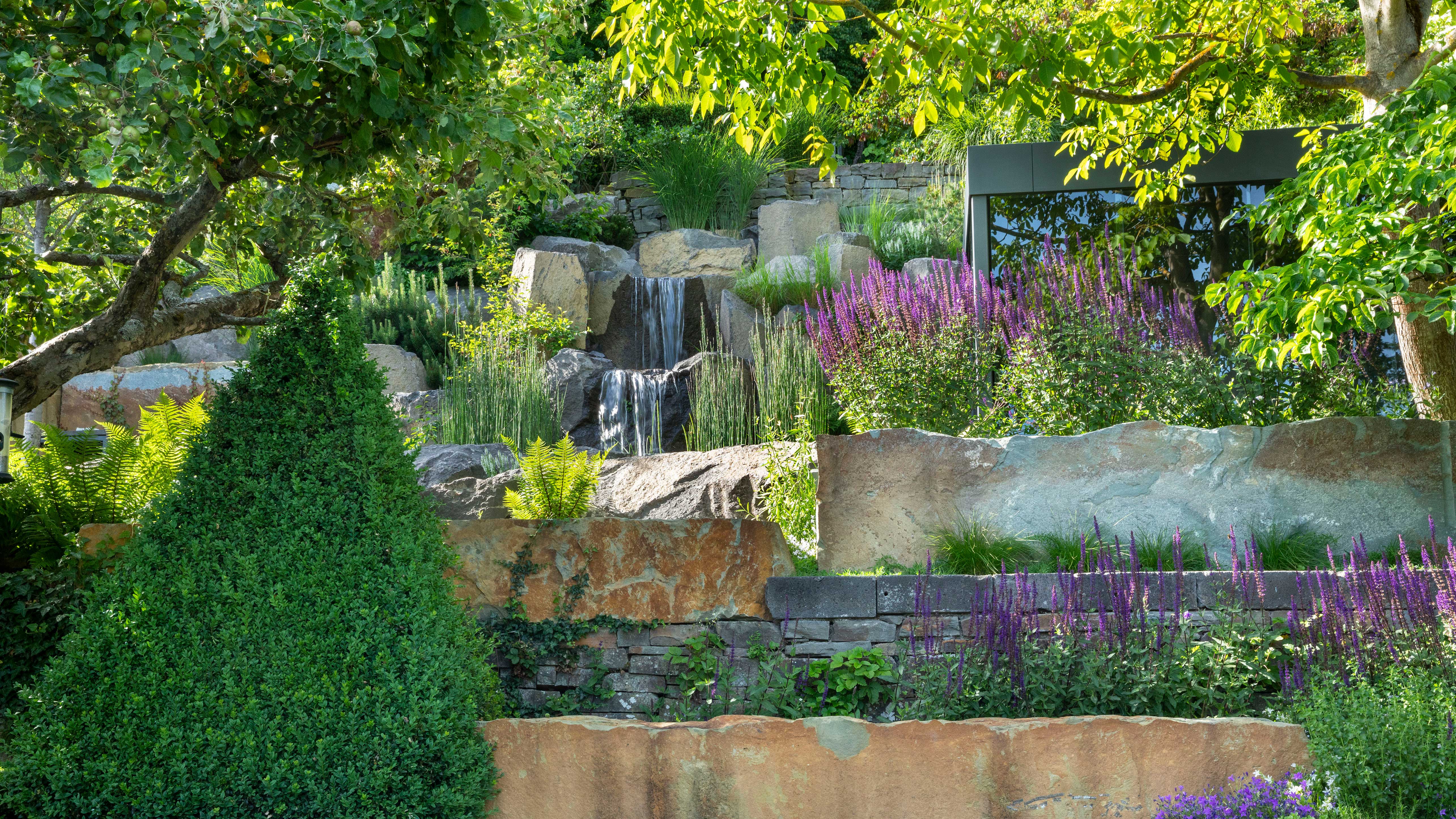

This atmospheric sloped garden is a lesson in what can be achieved with a challenging, steep site, using natural and sustainable materials.
Located in the Rheinland-Pfalz region of Germany, it was an overgrown hillside plot of scrubland when its owner took it on. He has since transformed it into a terraced garden of delights, encompassing a vine terrace, waterfall, meadow, orchard, vegetable garden and two bespoke garden pavilions.
Brimming with sloping garden ideas, the sensitive use of stone, plants and water, not to mention its effective treatment of the steeply sloping ground, will inspire.

The sloped, terraced garden is the creation of garden designer Peter Berg.
‘When I think about how I started with how to design a sloping garden, I would never have believed that I would be able to make something like this,’ Peter says.
‘Long ago it had been a vineyard, but over time it had become completely wild. There was no structure whatsoever – no walls, no paths or steps, just a lot of overgrown plants and a height difference of around 130 feet (40m), front to back.’
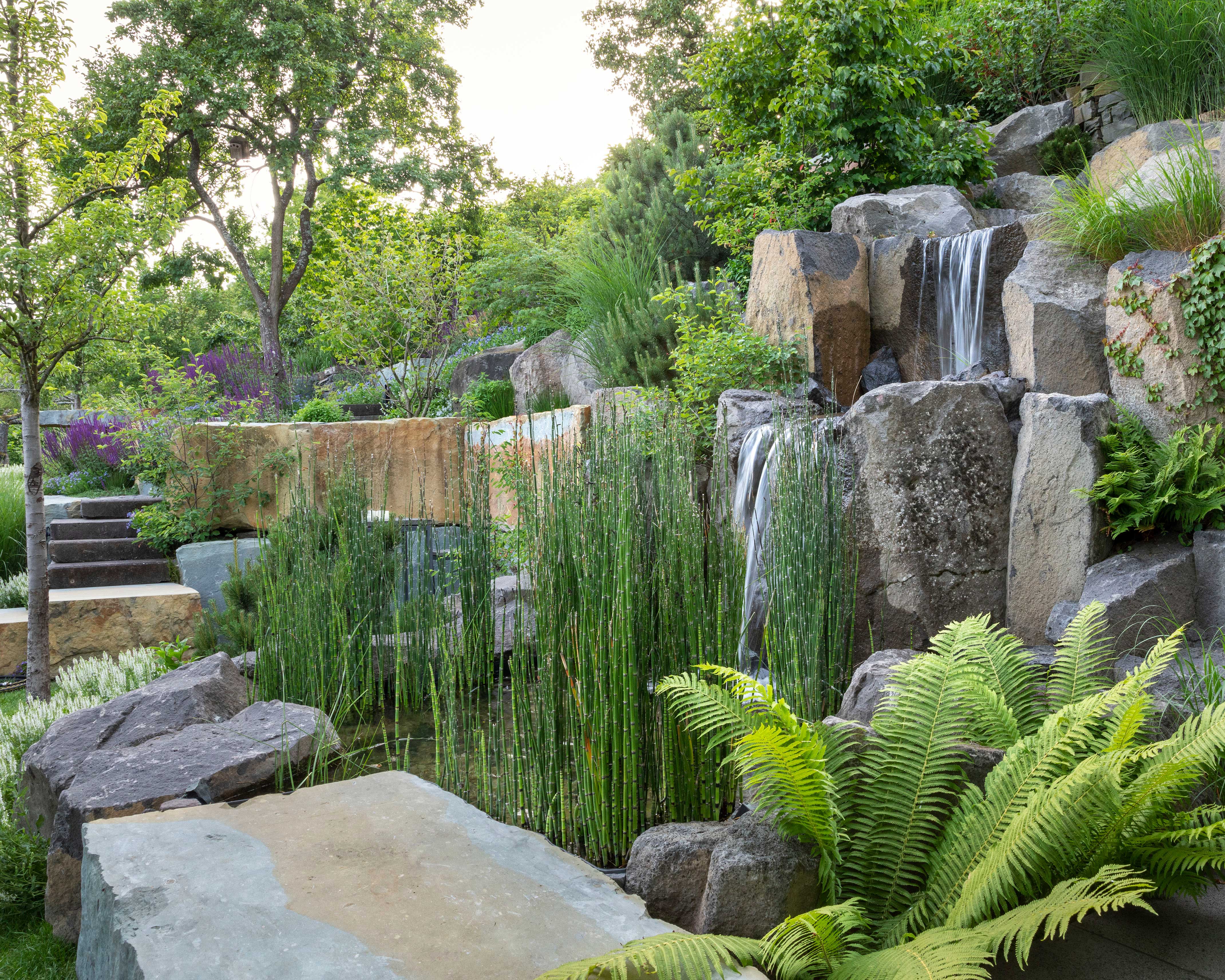
Use of natural rock
The Pfalz region is rich in vineyards, which are often terraced with dry stone walls, sometimes combined with natural rocks. Peter took this as his starting point incorporating landscaping ideas with rocks.
He scoured local quarries for his materials which include basalt lava from the region’s volcanic mountain ranges; limestone blocks; slate; and a type of feldspar-rich sandstone.
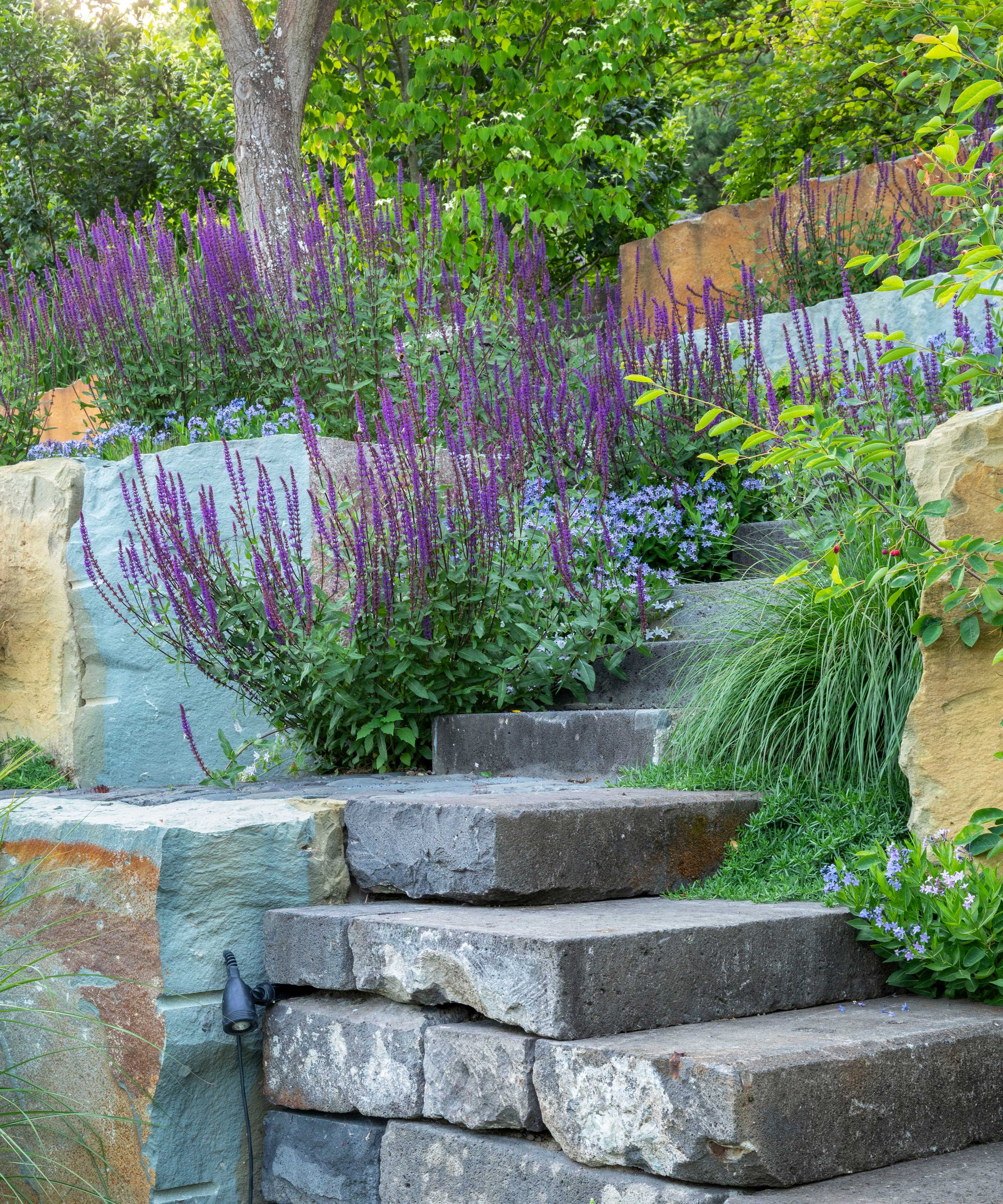
'Larger stones have more impact and look less fussy than smaller stones, but remember that, as with plants, for best effect you need a wide range of sizes, from very large to small,' he explains.
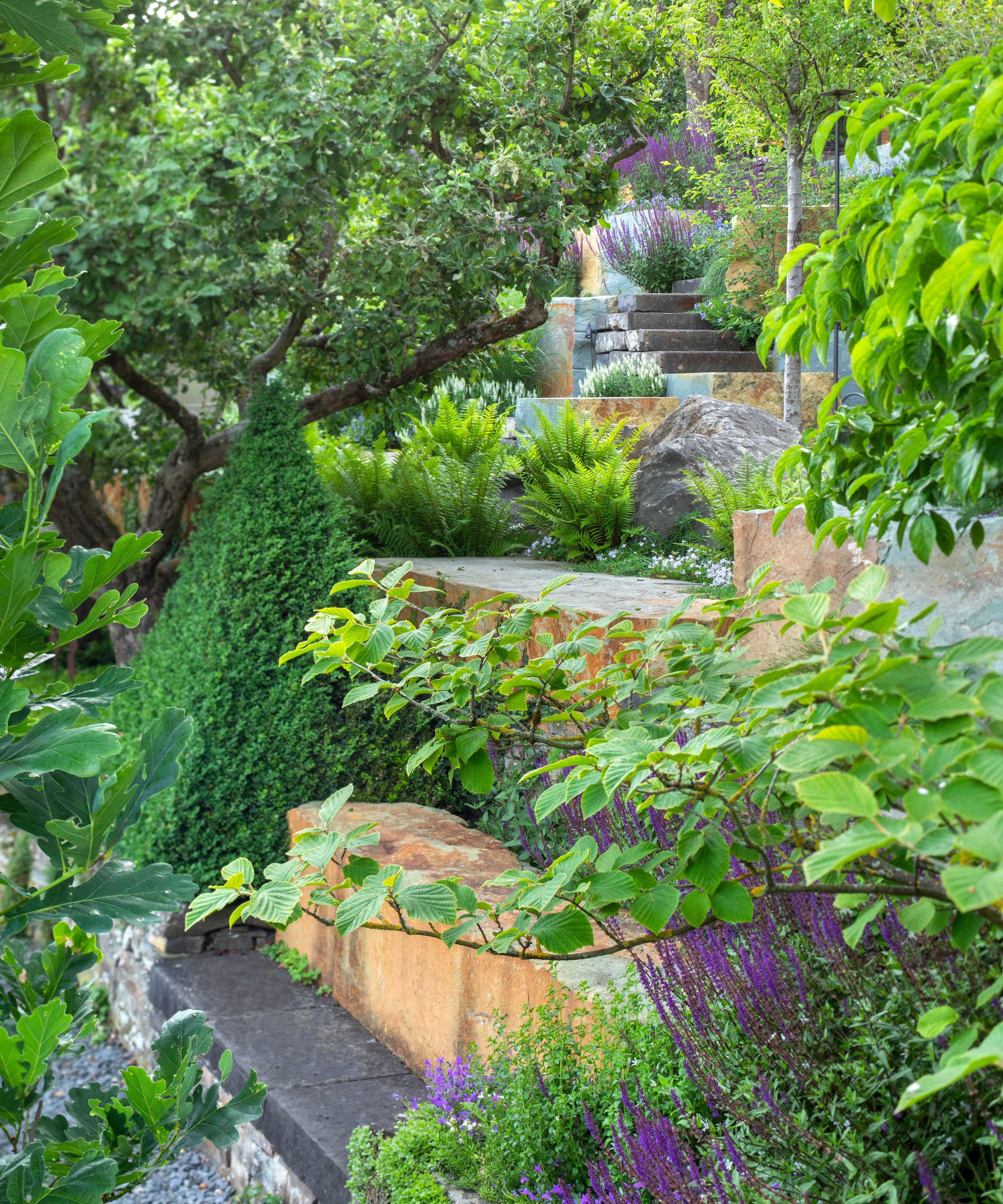
Peter estimates that, over the past 22 years, he has craned around 1,000 tons of rock into his garden.
‘Using such heavy stones means we don’t need concrete, which is more sustainable and better for the environment,’ he explains, so a better option for a sustainable garden idea.

‘Once you understand the rules, it’s also fairly uncomplicated to design with stone – you can use it for wall ideas, stepping stones or garden paths without the need for lots of detailed plans. And of course it’s very low maintenance, too, developing a wonderful patina as it ages,’ Peter adds.
When viewed from above the stonework appears almost as a patchwork, with the purple spires of Salvia ‘Caradonna’ adding vertical interest.
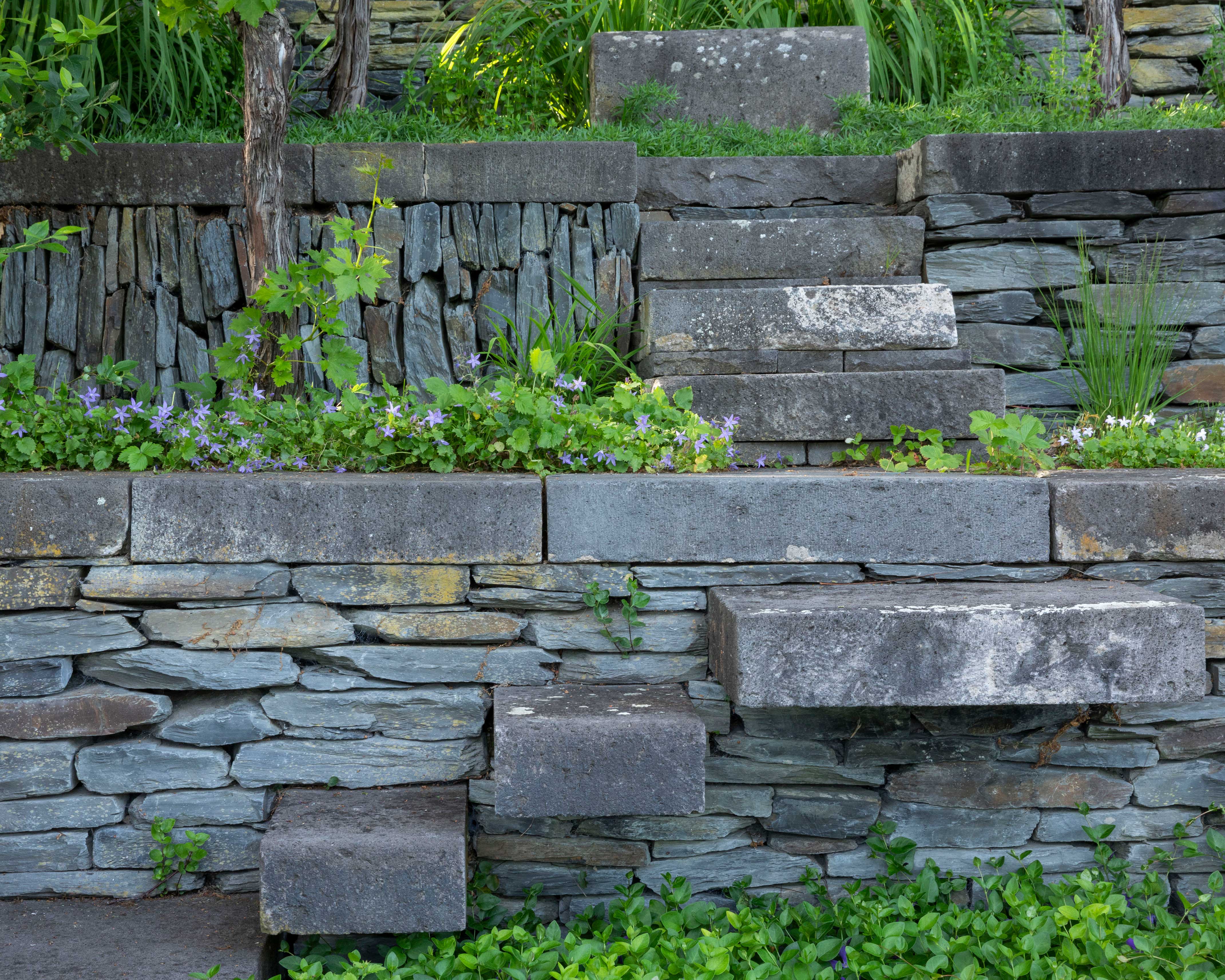
Recycled materials
As well as natural, hand hewn stone, Peter used recycled materials that had an interesting history for the hard landscaping.
‘The stones topping the wall in the vine terrace are from the old Rhein Promenade in Cologne,’ he says, ‘and the stone below is from the old railway platform in Koblenz where Kaiser Wilhelm alighted in 1905,’ he explains.
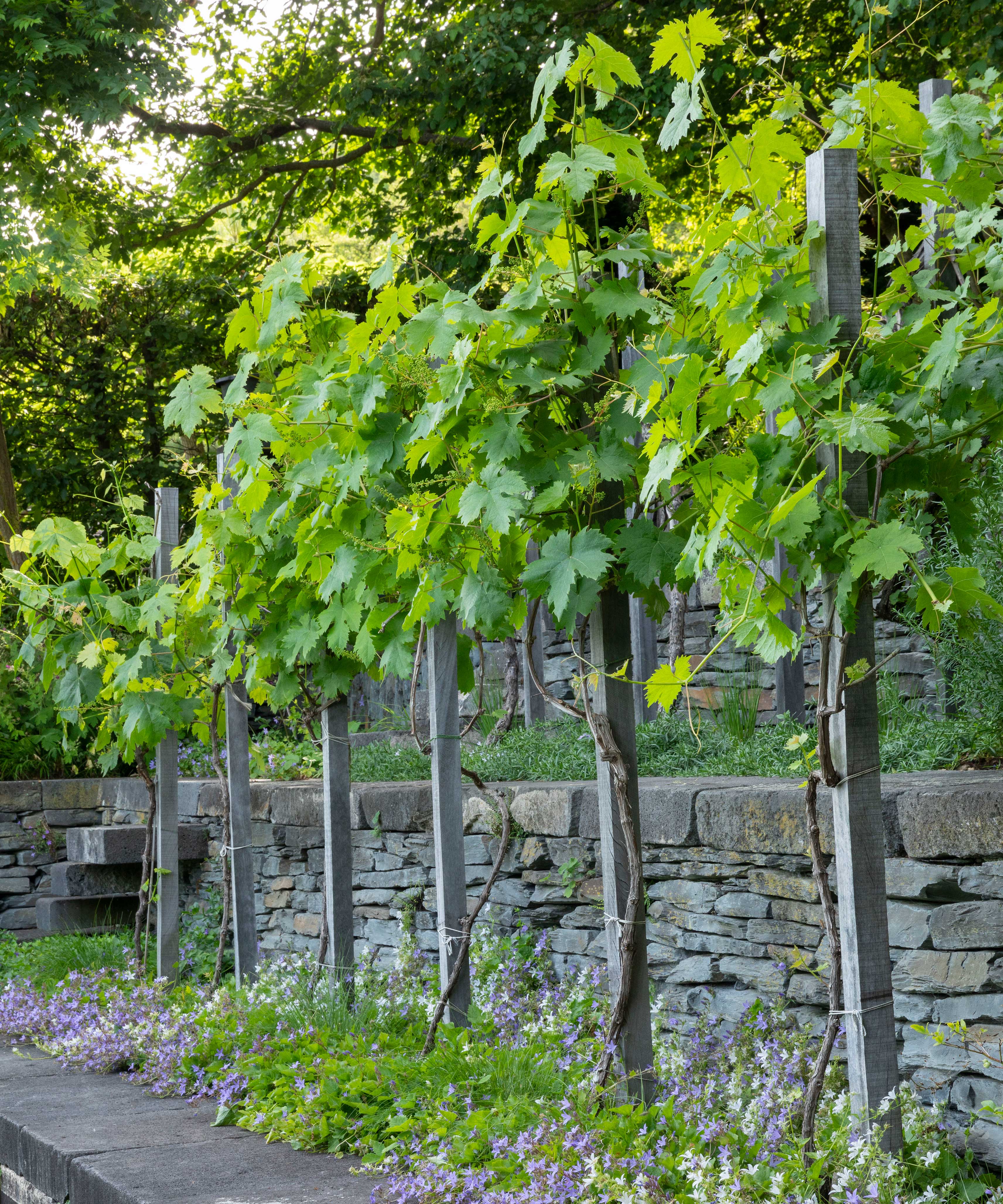
Layered planting
The rock also combines beautifully with plants and Peter has layered his planting as he has his stones to create a space that feels soft and lush, with a more naturalistic planting design.
Low-growing thymes and small grasses scramble over the green roof of the garden pavilion; ferns, campanula and Amsonia tabernaemontana, or eastern bluestar, cushion steps and froth at the base of large rocks
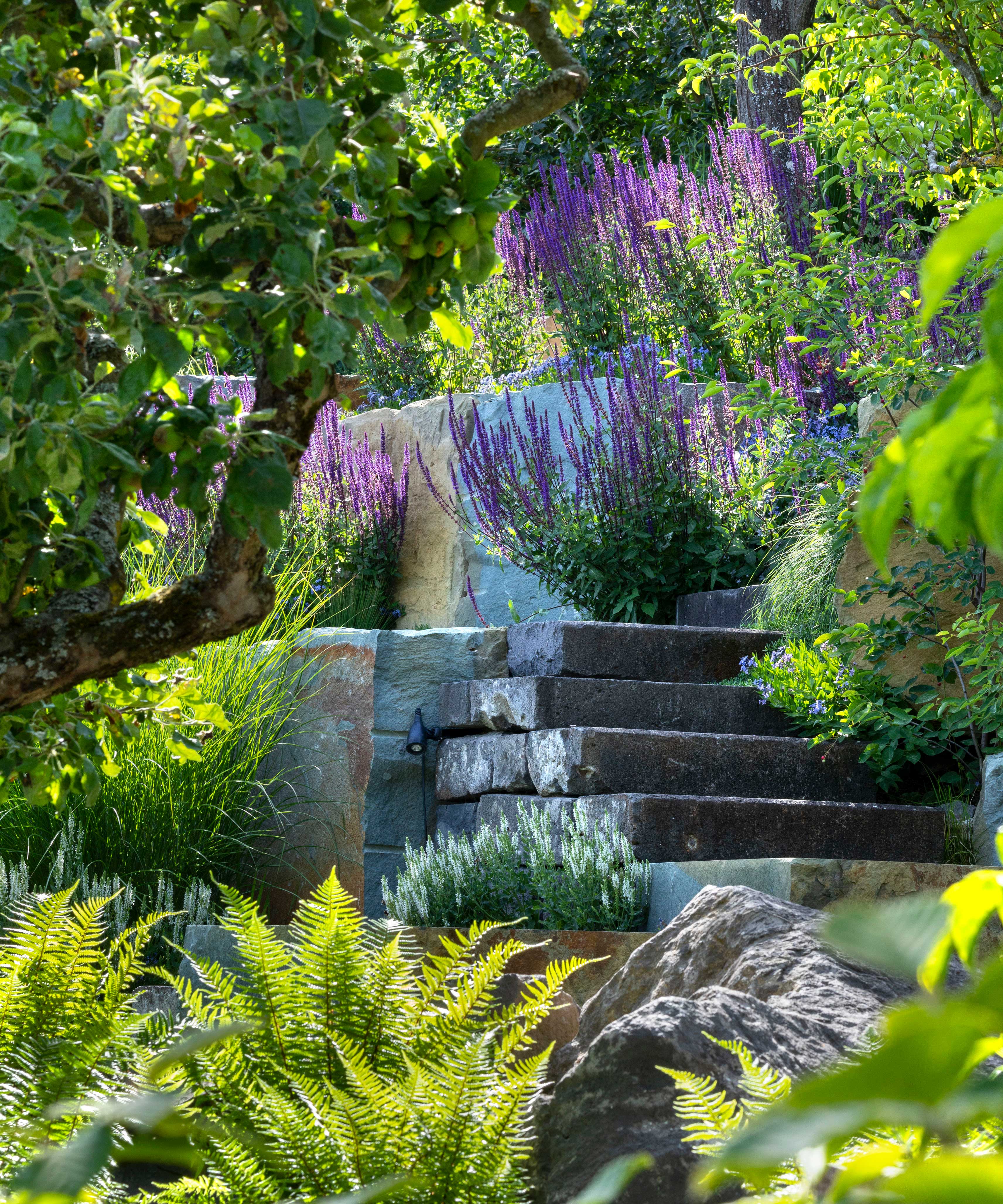
Growing ornamental grass, upright Miscanthus gracillimus, Salvia ‘Caradonna’ and Equisetum hyemale, around the water feature idea waterfall, emphasise the garden’s verticality.
'Don’t be afraid to use tall or upright plants to emphasize the verticality of your plot,' he adds.
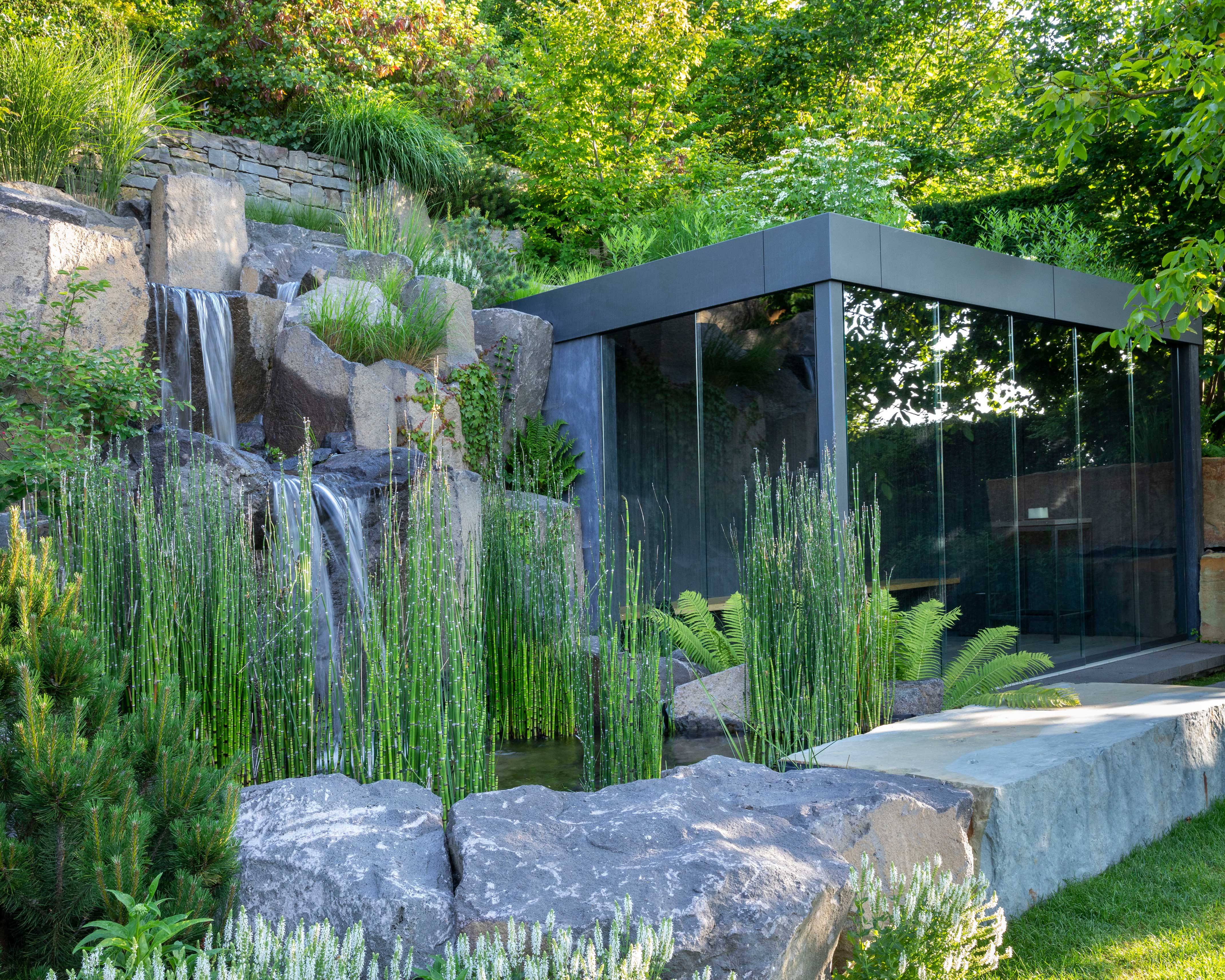
Peter has used many trees in the design – a mix of both native and more exotic, evergreen trees and deciduous varieties.
‘I like my trees to be healthy, long-lived and slow-growing. Planting between stones almost acts as natural bonsai in itself. Trees grow slower and more beautifully,’ he explains.
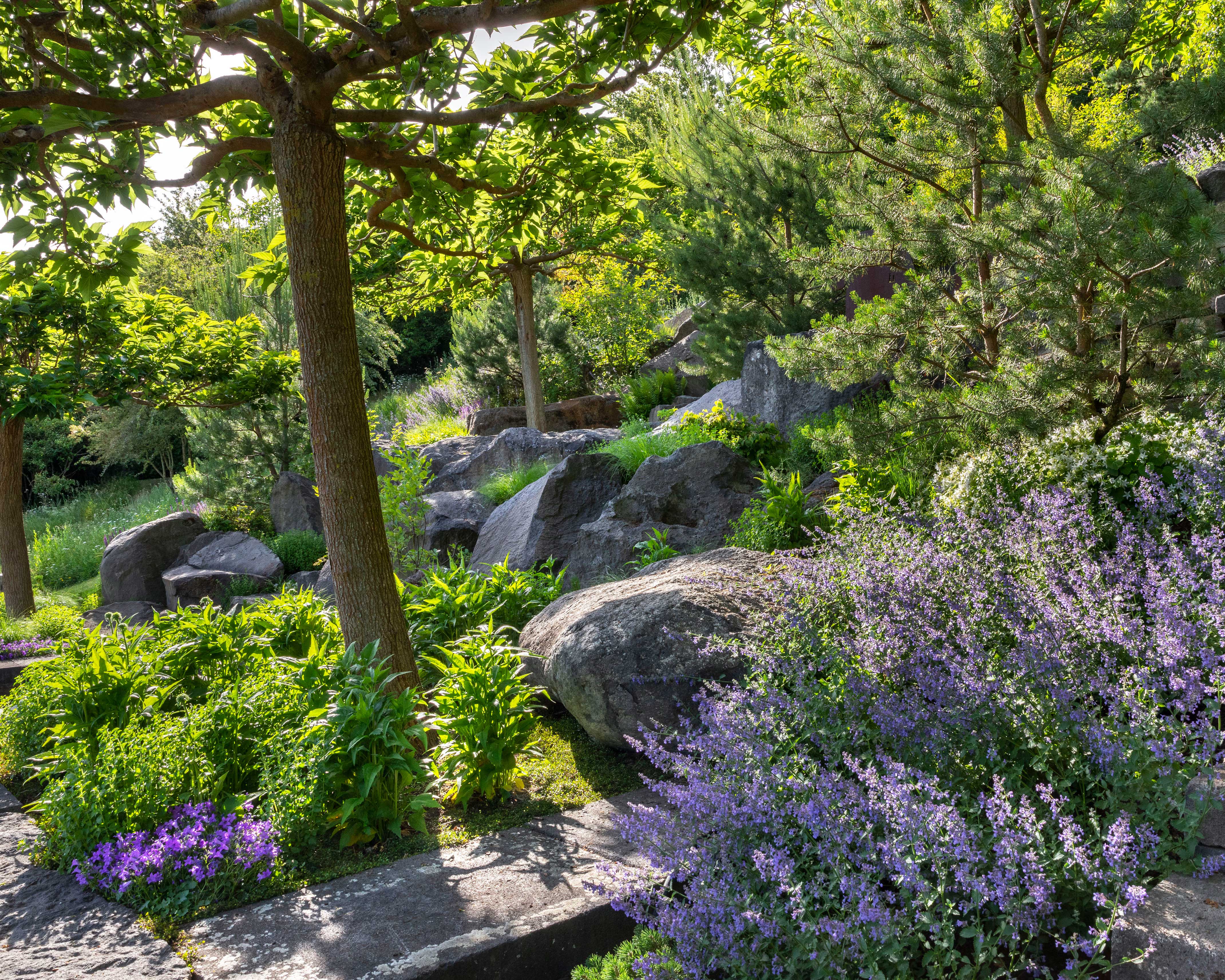
Japanese influences
Bonsai is not the only Japanese garden idea in this sloping garden.
Peter has visited Japan several times, touring its gardens and attending workshops in philosophy and stone placement. He also worked with a Japanese colleague for three years who taught him how to prune trees in the Japanese fashion, lifting and thinning their canopies to create pools of dappled shade beneath.
This is one of many topiary methods for clipping evergreens.
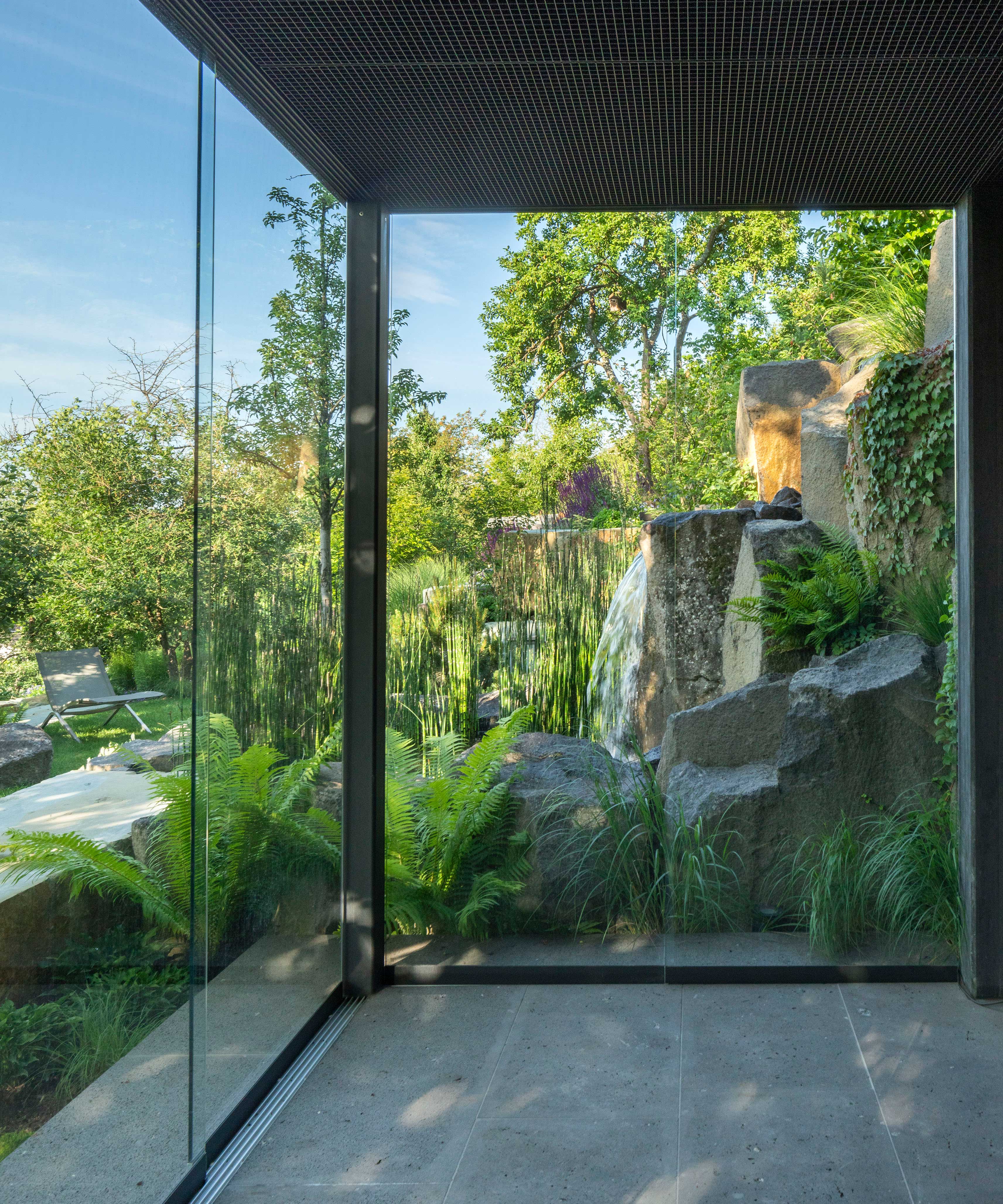
‘The Japanese are masters at searching for natural stones and plants and of making gardens with them,’ says Peter.
‘Using only rock, earth, trees and water is an approach that makes sense to me – I like to keep things simple.’
Words / Natasha Goodfellow
Sign up to the Homes & Gardens newsletter
Design expertise in your inbox – from inspiring decorating ideas and beautiful celebrity homes to practical gardening advice and shopping round-ups.
Rachel is senior content editor, and writes gardening content for homesandgardens.com, Homes & Gardens magazine, and its sister titles Period Living Magazine and Country Homes & Interiors. She has written for lifestyle magazines for many years, with a particular focus on gardening, historic houses and arts and crafts, but started out her journalism career in BBC radio, where she enjoyed reporting on and writing programme scripts for all manner of stories. Rachel then moved into regional lifestyle magazines, where the topics she wrote about, and people she interviewed, were as varied and eclectic as they were on radio. Always harboring a passion for homes and gardens, she jumped at the opportunity to work on The English Home and The English Garden magazines for a number of years, before joining the Period Living team.
-
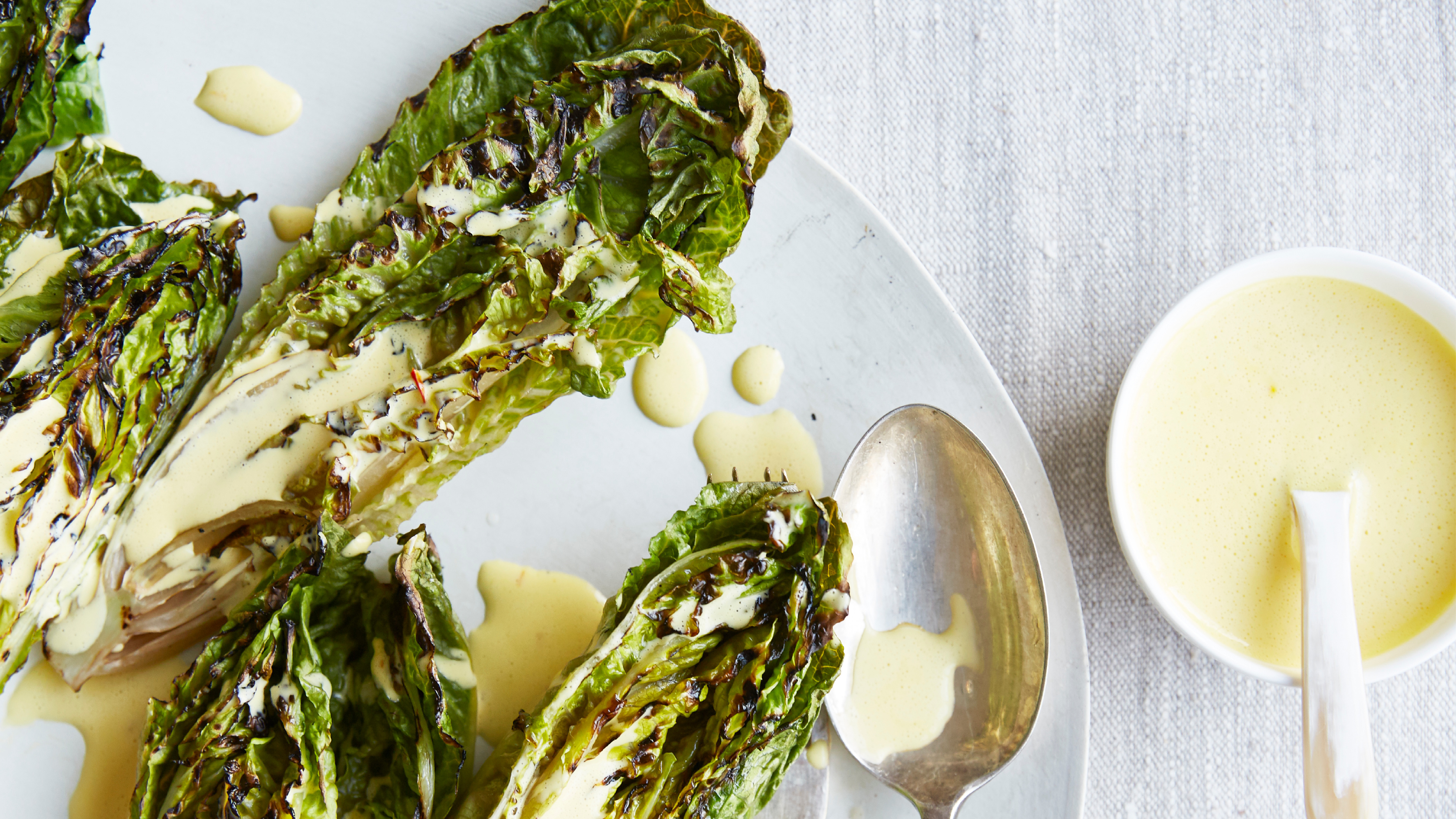 Charred little gem with saffron dressing
Charred little gem with saffron dressingThis recipe with charred little gem is both easy to make and sure to impress guests. It's the perfect side for fresh spring menus
By Alice Hart
-
 Grilled asparagus with herb and pickled red onion
Grilled asparagus with herb and pickled red onionThis grilled asparagus couldn't be easier, and it's a wonderful way to get the best flavor from our favorite spring veg. It's perfect alongside fish or lamb
By Alice Hart